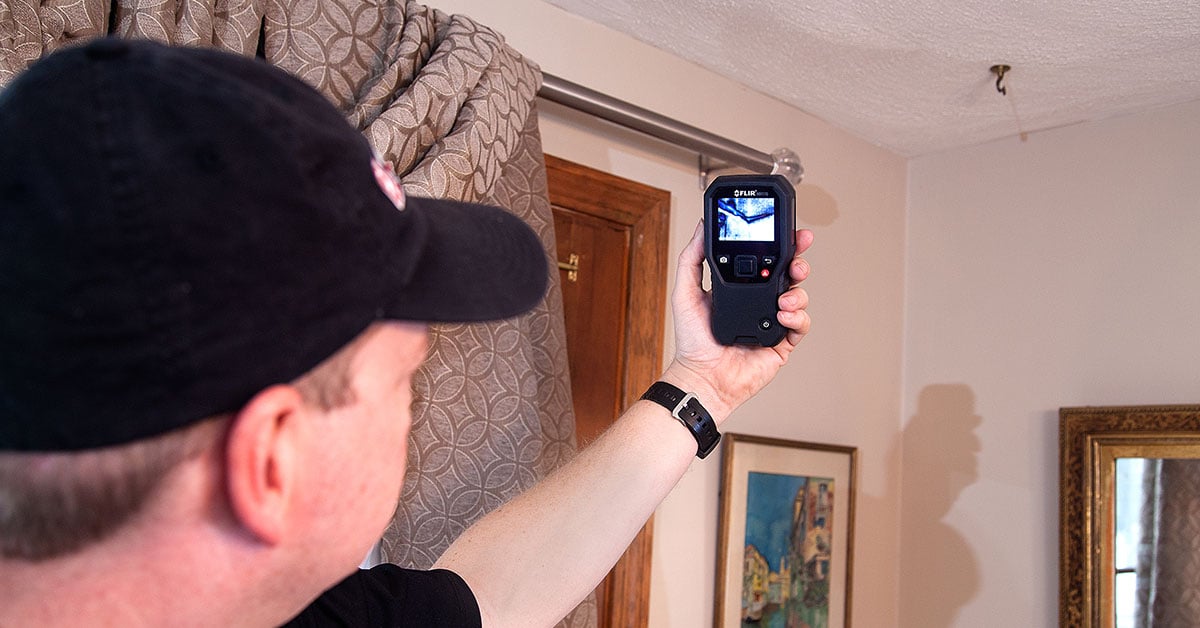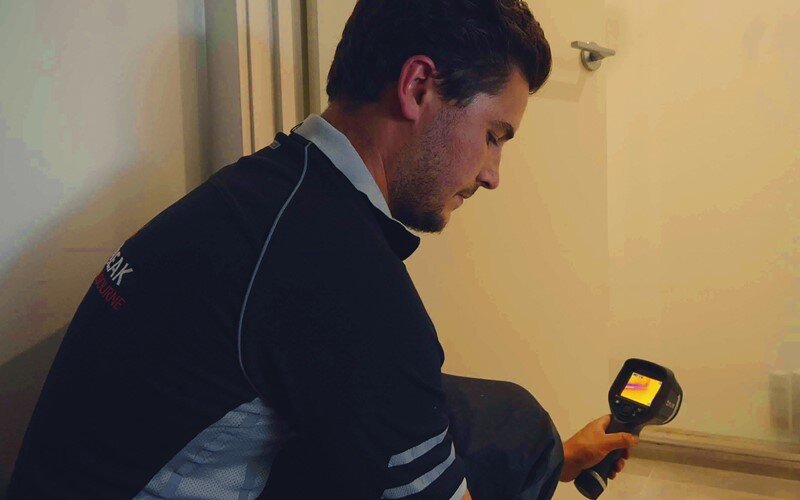6 Ways to Find Hidden Water Leaks in Your House
6 Ways to Find Hidden Water Leaks in Your House
Blog Article
The article below pertaining to Detecting hidden plumbing leaks is particularly entertaining. Check it out for yourself and see what you think about it.

Early discovery of dripping water lines can mitigate a possible disaster. Some tiny water leaks might not be noticeable.
1. Check Out the Water Meter
Checking it is a proven means that assists you discover leaks. If it relocates, that suggests a fast-moving leak. This means you might have a slow-moving leak that can also be below ground.
2. Check Water Intake
Analyze your water costs as well as track your water consumption. As the one paying it, you need to observe if there are any type of disparities. If you detect sudden changes, in spite of your consumption coinciding, it indicates that you have leaks in your plumbing system. Bear in mind, your water expense should drop under the same array each month. A sudden spike in your expense shows a fast-moving leakage.
A constant boost every month, also with the very same routines, reveals you have a slow-moving leak that's likewise gradually intensifying. Call a plumber to extensively check your property, particularly if you really feel a cozy area on your floor with piping beneath.
3. Do a Food Coloring Examination
When it pertains to water consumption, 30% comes from bathrooms. Test to see if they are running appropriately. Decline flecks of food color in the tank and also wait 10 minutes. If the color somehow infiltrates your dish throughout that time without flushing, there's a leakage in between the tank and bowl.
4. Asses Outside Lines
Don't forget to examine your exterior water lines as well. Ought to water seep out of the link, you have a loose rubber gasket. One tiny leakage can lose heaps of water as well as increase your water costs.
5. Evaluate the situation and also check
Property owners should make it a behavior to inspect under the sink counters and also inside cabinets for any kind of bad odor or mold development. These two warnings suggest a leakage so timely attention is needed. Doing routine examinations, even bi-annually, can conserve you from a major issue.
If you know your house is currently old, keep a careful eye on your heating systems, hose pipes, pipelines etc. Check for stainings and deteriorating as most pipelines and also home appliances have a life expectancy. They will likewise normally deteriorate because of tear and use. If you believe leaking water lines in your plumbing system, don't wait on it to intensify. Call a specialist plumber right away so you don't end up with a dreadful mess in your house.
Early discovery of dripping water lines can mitigate a prospective disaster. Some little water leaks may not be noticeable. Inspecting it is a proven way that helps you discover leaks. One small leakage can lose bunches of water and also increase your water costs.
If you suspect dripping water lines in your plumbing system, do not wait for it to rise.
WARNING SIGNS OF WATER LEAKAGE BEHIND THE WALL
PERSISTENT MUSTY ODORS
As water slowly drips from a leaky pipe inside the wall, flooring and sheetrock stay damp and develop an odor similar to wet cardboard. It generates a musty smell that can help you find hidden leaks.
MOLD IN UNUSUAL AREAS
Mold usually grows in wet areas like kitchens, baths and laundry rooms. If you spot the stuff on walls or baseboards in other rooms of the house, it’s a good indicator of undetected water leaks.
STAINS THAT GROW
When mold thrives around a leaky pipe, it sometimes takes hold on the inside surface of the affected wall. A growing stain on otherwise clean sheetrock is often your sign of a hidden plumbing problem.
PEELING OR BUBBLING WALLPAPER / PAINT
This clue is easy to miss in rooms that don’t get much use. When you see wallpaper separating along seams or paint bubbling or flaking off the wall, blame sheetrock that stays wet because of an undetected leak.
BUCKLED CEILINGS AND STAINED FLOORS
If ceilings or floors in bathrooms, kitchens or laundry areas develop structural problems, don’t rule out constant damp inside the walls. Wet sheetrock can affect adjacent framing, flooring and ceilings.
https://www.servicemasterbyzaba.com/blog/how-to-detect-water-leakage-in-walls/

Do you appreciate reading about Leaking water lines? Create feedback down below. We would be interested to know your feelings about this content. We are looking forward that you visit us again in the future. Loved our piece? Please share it. Let other people check it out. Thank you for taking the time to read it.
Report this page